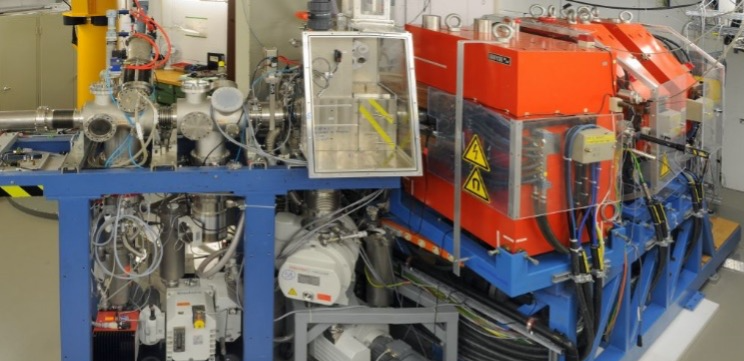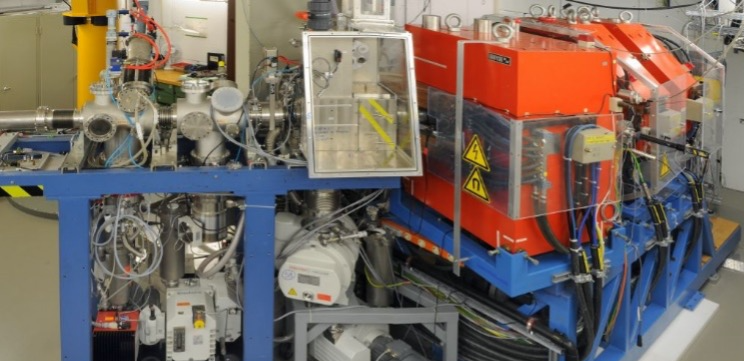Short-Lived Superheavy Nucleus Uncovered
In 1991 an official committee of physicists and chemists stipulated that for an atom to qualify as a new element its nucleus must survive for at least 10–14 seconds, long enough for its electrons to assemble into their shells. At a few milliseconds or so, the half-lives of the two heaviest known elements, tennessine and oganesson, are much longer. Somewhere within that 11-orders-of-magnitude expanse lies the limit for the existence of an atom. Now Khuyagbaatar Jadambaa of the GSI Helmholtz Centre for Heavy Ion Research in Germany and his colleagues have uncovered a superheavy nucleus with a lifetime of just 60 nanoseconds (ns), 2 orders of magnitude shorter than the previous minimum for spontaneously fissioning nuclei [1].
The team created rutherfordium-252 by firing a pulsed beam of titanium-50 ions at a foil target made of the even heavier lead-204. The team used four different beam energies that resulted in the fusion of rutherfordium-254, which, being “hot,” sheds energy by emitting either one neutron to leave rutherfordium-253 or two neutrons to leave rutherfordium-252.
The nuclides and the far more numerous products of other reactions then entered a so-called gas-filled recoil separator. In such a device, magnets separate the fusion reaction products from the unwanted ones by their momentum-to-charge ratios. Once sorted, the rutherfordium isotopes then travelled about 3.5 m inside the device before implanting themselves in a silicon detector.
The largest beam energies used by the team favored the production of rutherfordium-252 over rutherfordium-253. In all, 27 rutherfordium-252 ions were observed with an apparent half-life of 13 µs. Thanks to their detection and data acquisition systems, Khuyagbaatar and his colleagues determined that almost all the 13-µs span belonged to the decay of an excited isomeric state in the rutherfordium-252 nucleus. The ground state fissioned in only 60 ns. Khuyagbaatar says that he and his colleagues were only able to measure the 60-ns ground-state fission thanks to the existence of the 13-µs isomeric state in rutherfordium-252. Because of it, the excited state survived the 1-µs time-of-flight of the separator, and the ground state appeared and decayed in the detector rather than the separator.
Nuclear fission is a dynamical process that involves the collective motion of protons and neutrons, which occupy quantified energy levels inside the nucleus. Modeling the process is complex and challenging, especially for superheavy nuclei, whose numbers of protons and neutrons are at their most extreme.
Rutherfordium-252 is the element’s most neutron-deficient isotope. Khuyagbaatar says the present results could both help refine the fission modeling of neutron-deficient rutherfordium and improve predictions of the fission half-lives of neutron-rich superheavy nuclei. These nuclei participate in the top end of the so-called r process, which accounts for the production of half the elements heavier than iron. As yet, none of those r-process superheavy nuclei have been made in a lab.
Theorist Filomena Nunes, who studies unstable nuclides at Michigan State University, underscores the importance of adding data from the extremes of neutron richness and neutron deficiency to constrain complex models. “In this way, the work will impact future studies of the r process and other studies of superheavies,” she says.
–Charles Day
Charles Day is a Senior Editor for Physics Magazine.
References
- J. Khuyagbaatar et al., “Stepping into the sea of instability: The new sub-µs superheavy nucleus 252Rf,” Phys. Rev. Lett. 134, 022501 (2025).





